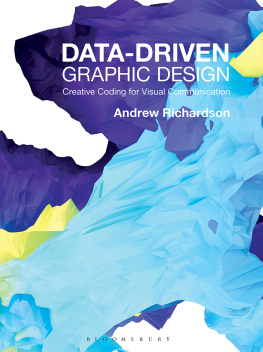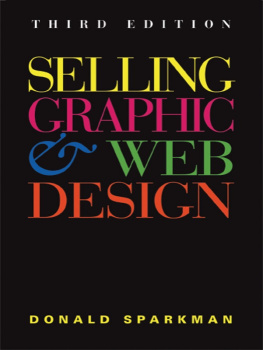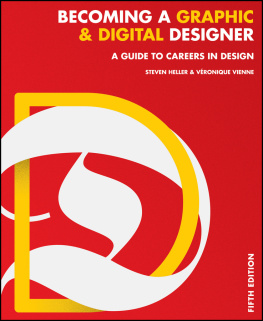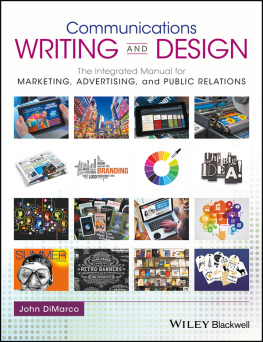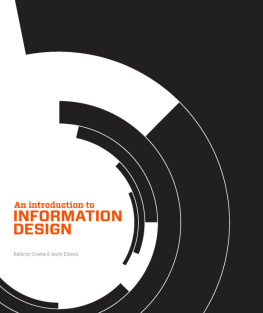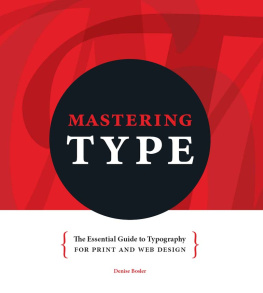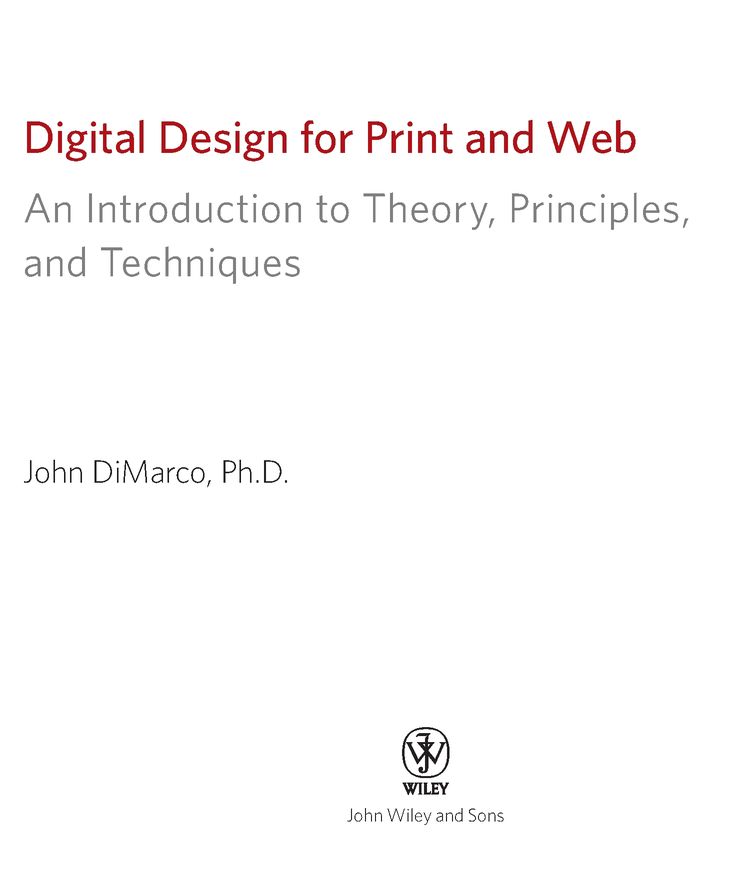Table of Contents
To my partner and my love, Kimberly, and my boys, David and Jack.
Preface
Digital Design for Print and Web: An Introduction to Theory, Principles, and Techniques was written to help people succeed with digital design. It is a learning product that incorporates both video lessons and an in-depth textbook written from two perspectivesthat of a student, and that of a teacher.
First I put myself in the shoes of a new designer or design student caught up in a frenzy of information. The melding of new technology, techniques, and principles causes many inexperienced designers to default to honing their computer skills, rather than establishing their design sense. This is dangerous: it creates a backlash against the creative process, which requires us to think creatively and then producenot the other way around. As tools and technology become increasingly accessibleand powerfulI see this problem among more and more students.
To learn design, you need to recognize it and extract its principles for use in your own work. To be a digital designer, you must marry the principles of design to software techniques. You are thus engaged in using theory in practice. That is what this book is about. It will help you discover the principles of design and understand the most vital digital design techniques used today. Along the way, you will learn by seeing real-world design examples from highly prominent designers and artists. Then you will learn by doing, using step-by-step examples and tutorial movies.
As a teacher of digital design, I have come to realize that I must deliver lessons in principles, techniques, and technology. Having only two of the three components in my lectures jeopardizes the learning experiences of my students. Finding teaching resources, especially textbooks, is difficult; most simply dont deliver the depth and breadth of coverage needed to teach both theoretically and pragmatically. When teaching digital design in the past, I have often been forced to use several books for a single courseor no book at allsimply because no one book could provide both the theory and practical application that I felt I must convey to my students. That is why I wrote this book: a text that can be used in a classroom and that can serve as a valuable professional resource after the formal learning concludes. This text covers and connects introductory theoretical design foundations and industry standard techniques for visual communication problem solving using print and Web media.
Although the text presents several different industry-standard software applications, the book is technique driven rather than software driven. The techniques are applied to digital design problem solving across software titles and versions. The book aims to provide value to small lab settings that demand hands-on instructors as well as to larger courses planned around instructor-driven lectures and demonstrations that encourage experienced students to explore software techniques on their own. Inspiration is provided through images from classic and contemporary designers.
Part One presents introductory design and graphic communication concepts and principles. Theoretical coverage includes a concise design overview surveying communication goals and fundamental design principles, using historical, professional, and student images of digital print design, Web design, Web graphics, digital imaging, and digital illustration.
Part Two introduces technical coverage, providing a primer of basic to intermediate digital design techniques for students of communication design, graphic design, computer graphics, and media graphics.
Unique Features
Over two hundred historical and professional illustrations of design concepts, print design, Web design, Web graphics, digital imaging, and digital illustration from world-renowned designers and design firms as well as students.
Coverage of theory and practice in one text.
Online tutorial movies for each chapter to support classroom lectures, student assignments, and lab sessions.
Design assignments for in-class or homework assignments.
Illustrated, step-by-step techniques.
A comprehensive connection between theory and practice.
Critical terms and techniques combined with short treatments to provide a thorough primer for new learners.
Advanced production projects online for accelerated students.
Progression toward print and Web project development.
Pedagogical tools including chapter objectives, key design concepts, design assignments, endnotes, and additional bibliographic resources.
Acknowledgments
This book was a team effort. Following are the people who helped make it come together.
The Team at Wiley
I am thankful to the team at John Wiley & Sons who made my vision a reality. Senior editor Margaret Cummins and her assistants Leslie Saxman and Lauren Poplawski worked hard to mold my ideas into a publication that would impact the lives of students and professionals across the world. Margaret walked me through this project, sharing her wealth of experience and expertise freely. She challenged me to develop a book that would refresh the digital design publication market and enable people who read it to learn critical principles and techniques in a way that is clear, comprehensive, and innovative. I also need to thank senior production editor David Sassian and copyeditor Andrew Miller for polishing the manuscript into a finished work.
Contributors to This Book
I was so fortunate to connect with a wealth of great creative professionals when I was writing this book. These designers, photographers, and design history icons, as busy as they are, were kind enough to respond to the requests I sent them for images of their work. Those images helped make this book beautiful and practical, and I am grateful to each one of them for their contribution to my small piece of history.
James Biber of Pentagram Design
Michael Bierut of Pentagram Design
Michael Calandra
Kristen Crawford
Hillman Curtis of Hillman Curtis Inc.
Greg DOnofrio of Kind Company
John Fekner
Brian Fendt
Kevin Fornito
Michael Gericke of Pentagram Design
Milton Glaser of Milton Glaser Studio
Luke Hayman of Pentagram Design
Kitt Hendricks of Pentagram Design
Julia Hoffmann, Creative Director, Museum of Modern Art (MOMA)
Angus Hyland of Pentagram Design
Don Leicht
Domenic Lippa of Pentagram Design
Alvin Lustig
Elaine Lustig Cohen
Richard Kirk Mills
Justus Oehler of Pentagram Design
Susannah McDonald, Archivist at Pentagram Design
Abbot Miller of Pentagram Design
Micha Riss of Flying Machine
Stefan Sagmeister of Sagmeister Inc.
Paula Scherof Pentagram Design
Jee Won Sin
Tommy Spero of Soul Associates
DJ Stout of Pentagram Design
Lisa Strausfeld of Pentagram Design
Richard Rex Thomas
Steve Watson of Turnstyle
Special Thanks
My former student, and now my friend and colleague, Kristen Crawford provided many of the illustrations and figures in this book, working through my sometimes cryptic requests. Her tireless dedication to this project was instrumental to its success. I am thankful to have met Kristen and value her friendship.
My former students Brian Fendt, Kevin Fornito, and Michael Calandra graciously provided their photography and artwork for the in-text examples and learning movies.




